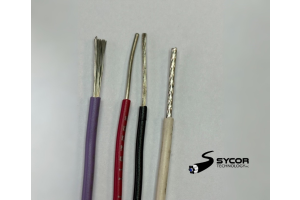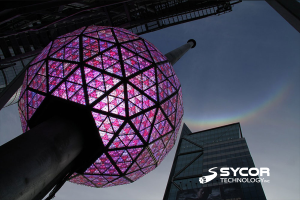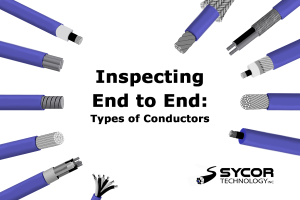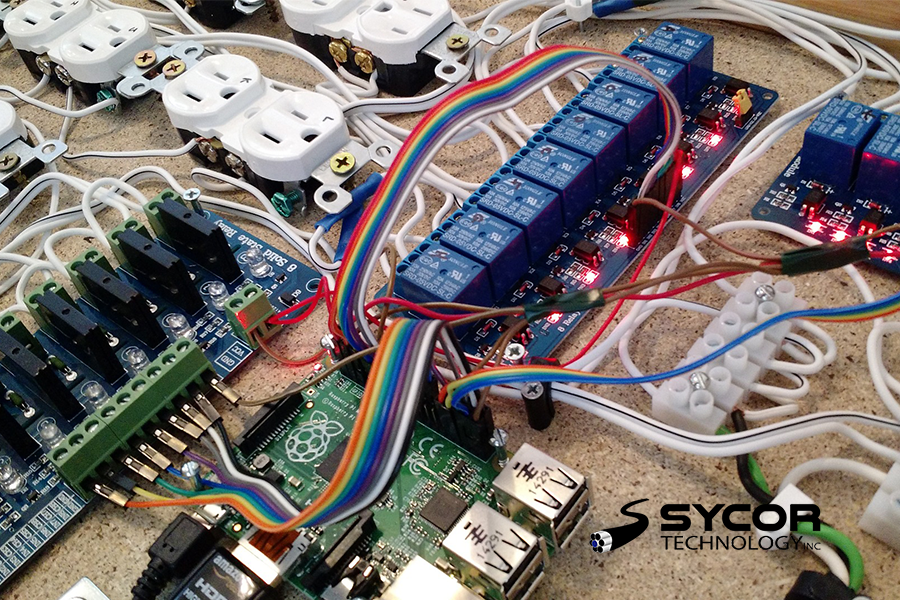
Ribbon Cable
In order to fully understand these flat wires, you'll first need to learn about the different constructions and the applications they're used within. A ribbon cable is defined as "a cable with many conducting wires running parallel to each other on the same flat plane. As a result, the cable is wide and flat. Its name comes from its resemblance to a piece of ribbon" (Wikipedia). The unique aspect comes from the ribbon cables' flat construction. While many other products typically have a single conductor and a circular construction, or a multi-conductor circular construction, the flat ribbon cables are thin with limited flexibility.
Types of Ribbon Cables
Twisted Flat Ribbon Cable
The twisted ribbon cable is a variant of the standard construction but has pairs for the conductors that are twisted and bonded together. This type of twisted cable is a little bit different than twisted paired cables because parts of the cables aren't twisted. This is done to make the connectors and PCB headers able to be terminated with traditional IDC ribbon cabling techniques.
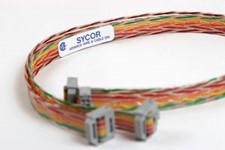
Rainbow Ribbon Cable
Rainbow ribbon cables have the same construction as the standard ribbon cable, except the rainbows' default colouring helps with organization and identification. This construction can sometimes have the ends split for individual termination.
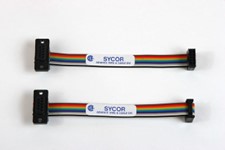 |
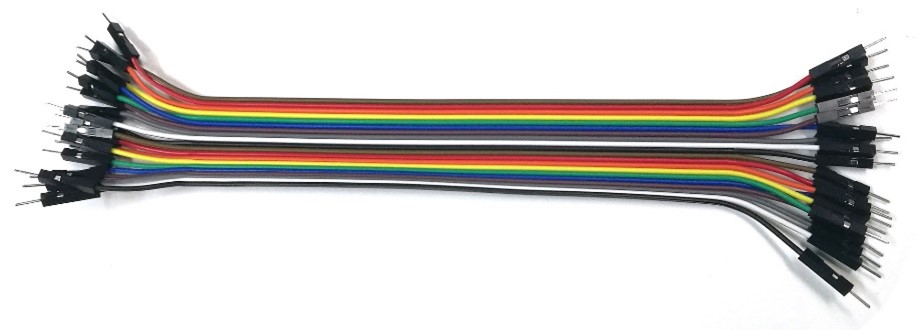 |
Standard Ribbon Cable
The standard ribbon cable is used for its ability to mass terminate and can be identified by its grey colour.
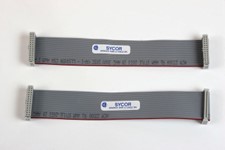
Round To Flat Ribbon Cable
The round-to-flat ribbon cable is unique among ribbon constructions. The start of the cable is bundled into a circular construction and then splits apart for application use. This construction is very useful for tight space, while the ending portion still reaps the benefits that the ribbon construction offers.
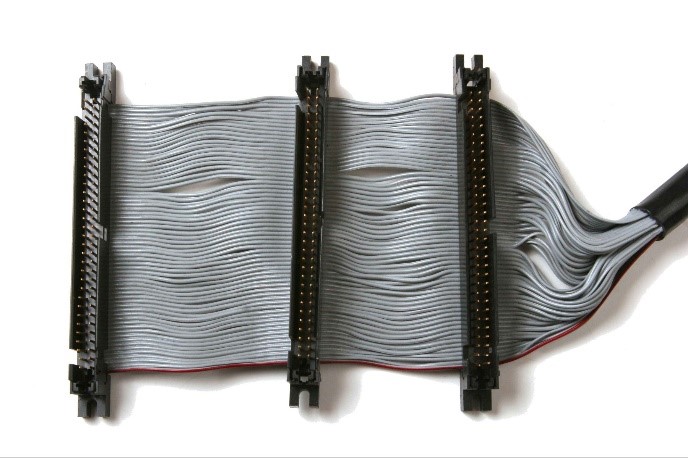
Bonded Ribbon Cable
A bonded ribbon cable is another unique construction. This product is available in 3 different types of cables:
The bonding allows these cables to keep an organized construction from one end to the other. The bonding takes away much of the flexibility and can be difficult in tight spaces, but makes mass termination with a wide range of cabling products significantly more straightforward. Ordering this product is also different than other ribbon cables because unlike them, the bonded ribbon cable doesn't have preset sizes. For this construction, you choose your product, and then our team seals them together using adhesive glue. Similar to the other constructions, the bonding is used for organization, identification, and mass termination.
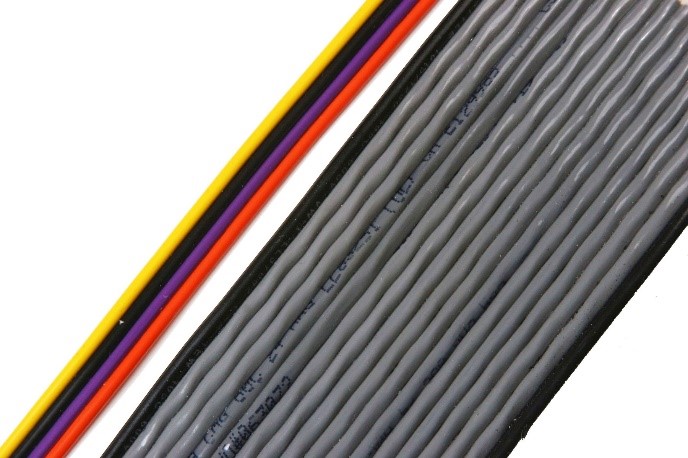
Types of Ribbon Cable Connectors
The main point of any kind of ribbon cable is to enable mass termination, specifically for IDC connectors. These rows of sharp contacts are applied on both ends of the cable, although on special occasions, one end may be crimped or have a solder-bucket connection.
The most popular types of connectors that are available for ribbon cables:
- BT224
- D-Subminiature
- Micro ribbon
- DIN 41612
- PCB transition header
- DIL headers
Ribbon Cable Applications
Ribbon cables are typically used in computer applications within internal peripherals. These applications have changed over the years originally being used in BBC micro and Apple 2 series for older computer models. Today the most common places to find these products include hard drives, CD drives, floppy drives, and wire harnesses.
Sycor’s different ribbon cable Constructions
- Extruded ribbon cable 0.050’’ pitch, ul2651
- Extruded rainbow ribbon cable 0.050” pitch
- Twisted pair ribbon cable 0.050” pitch
- Extruded ribbon cable 0.100” pitch, ul2651
- Extruded ribbon cable 0.156” pitch, ul2651
- Round to flat ribbon cable
- Shielded and jacketed flat ribbon cable
- Flat festoon cable
Ribbon cables are unlike any other cabling product and can come in a variety of different constructions and colours. The most consistent deciding factor that determines if your application should use a ribbon cable is if mass termination is essential. Feel free to reach out to our sales team at [email protected] for any additional information, our expert sales team is more than happy to help.
For more information about us:
Call Toll Free - 1.800.268.9444 or Email Us - [email protected]


